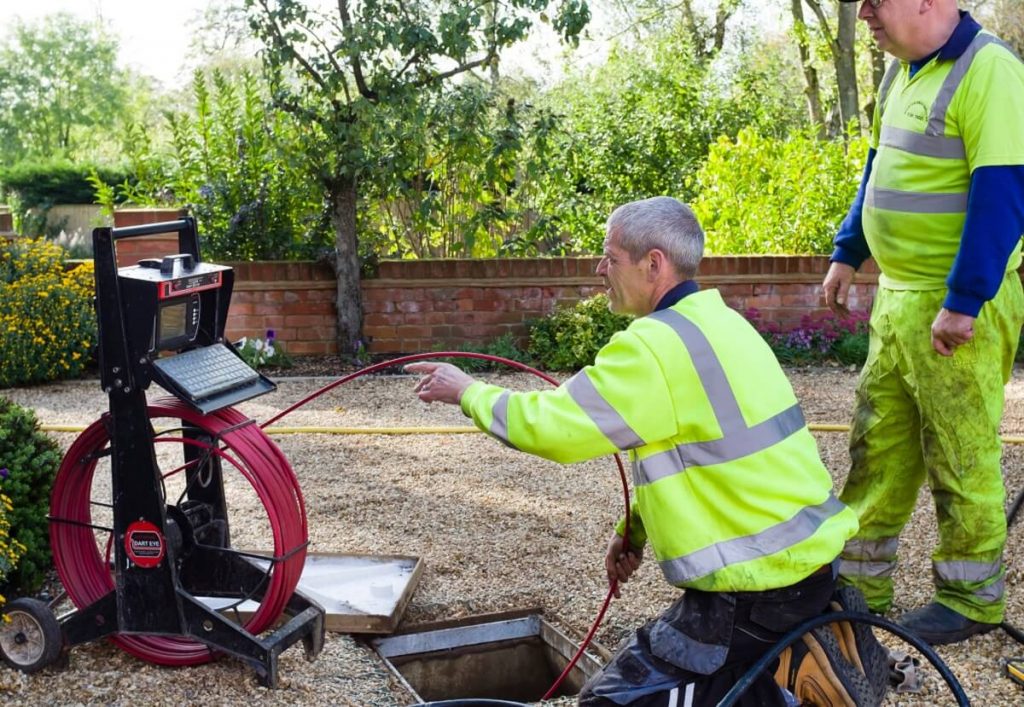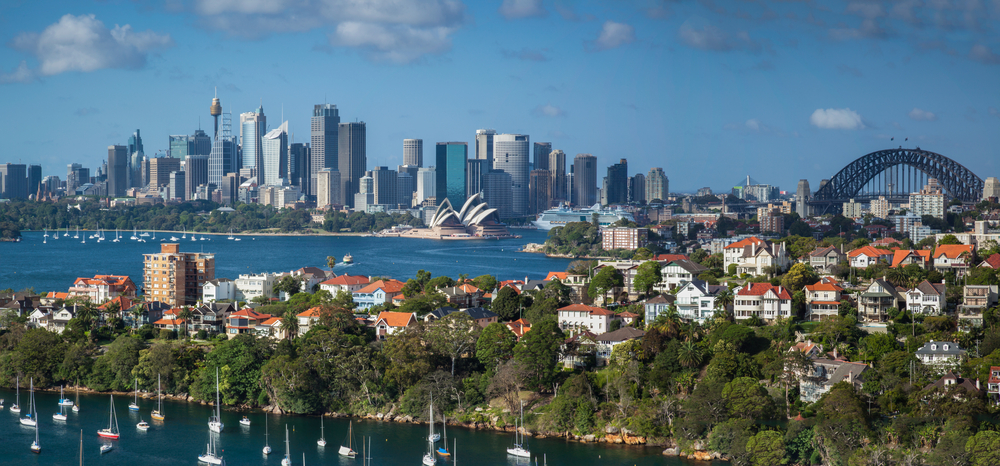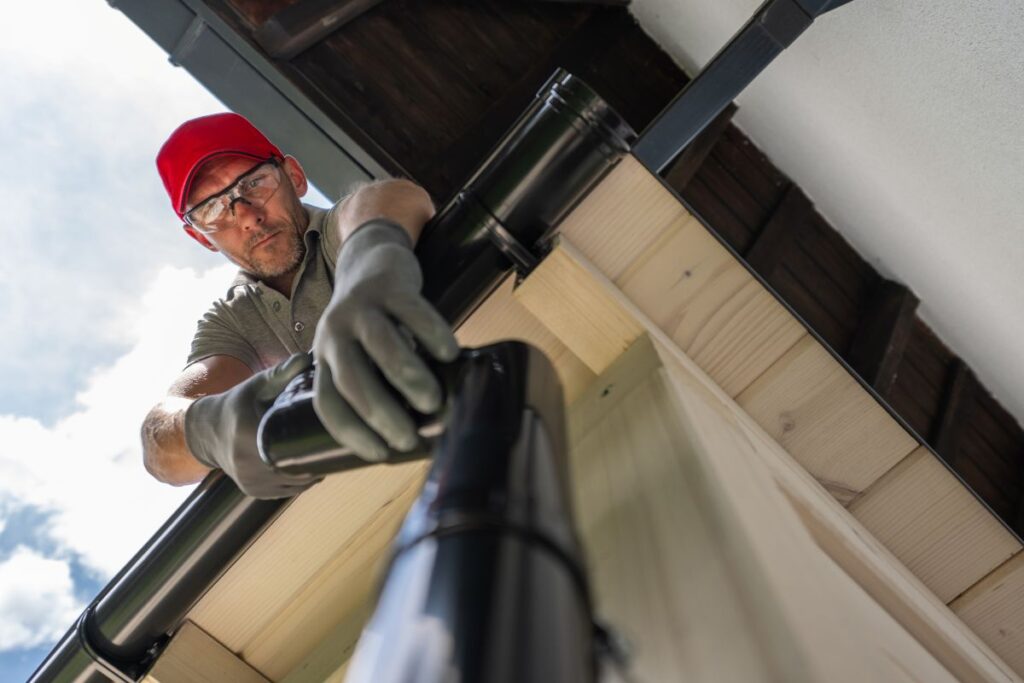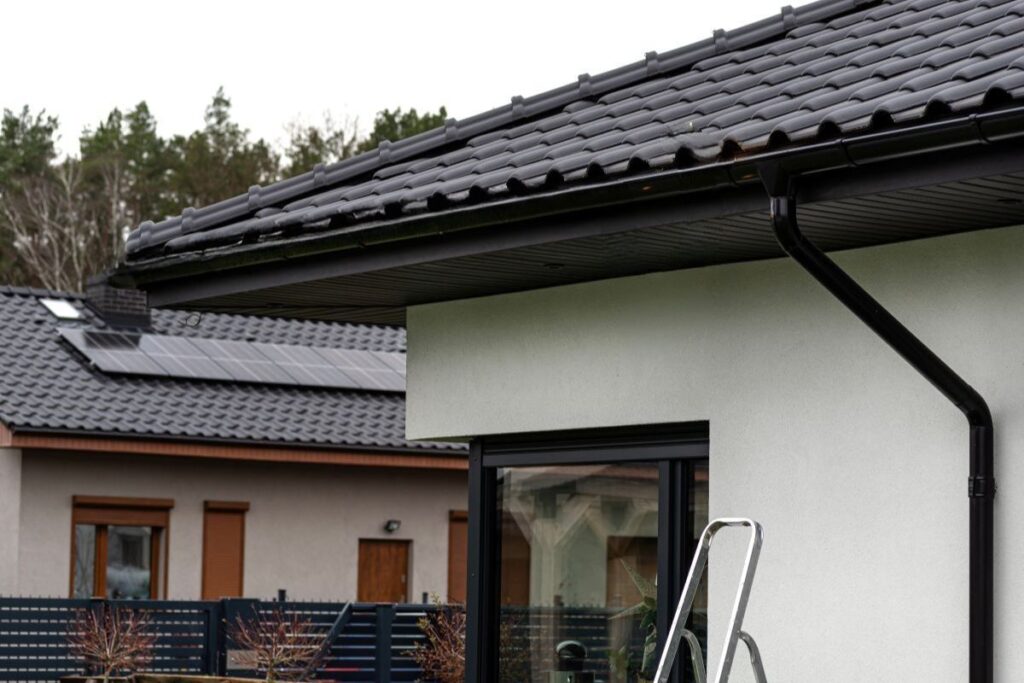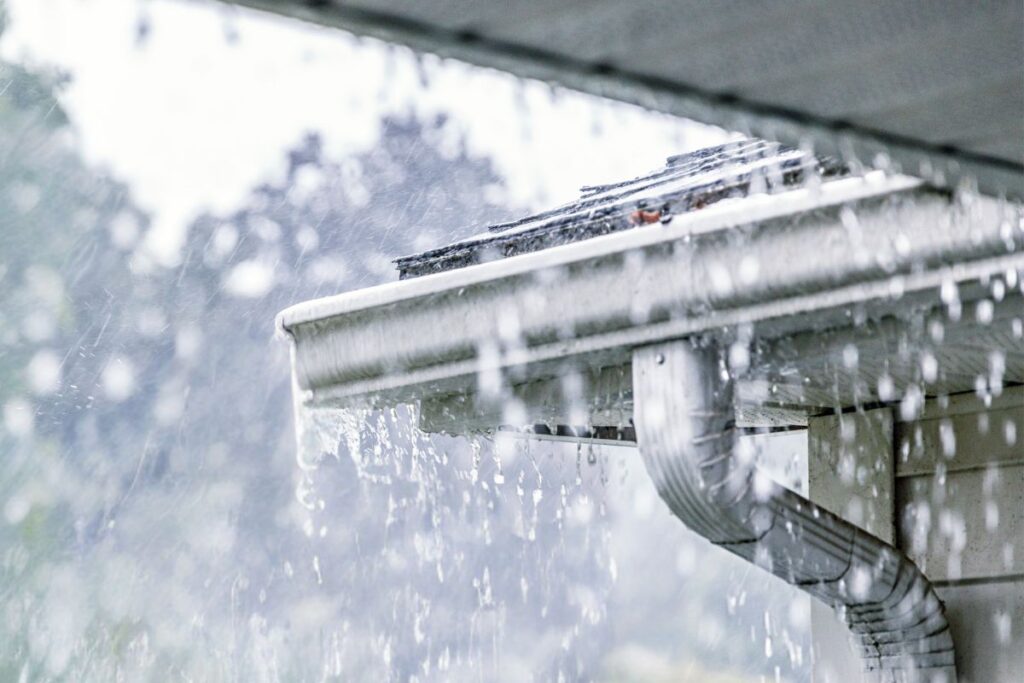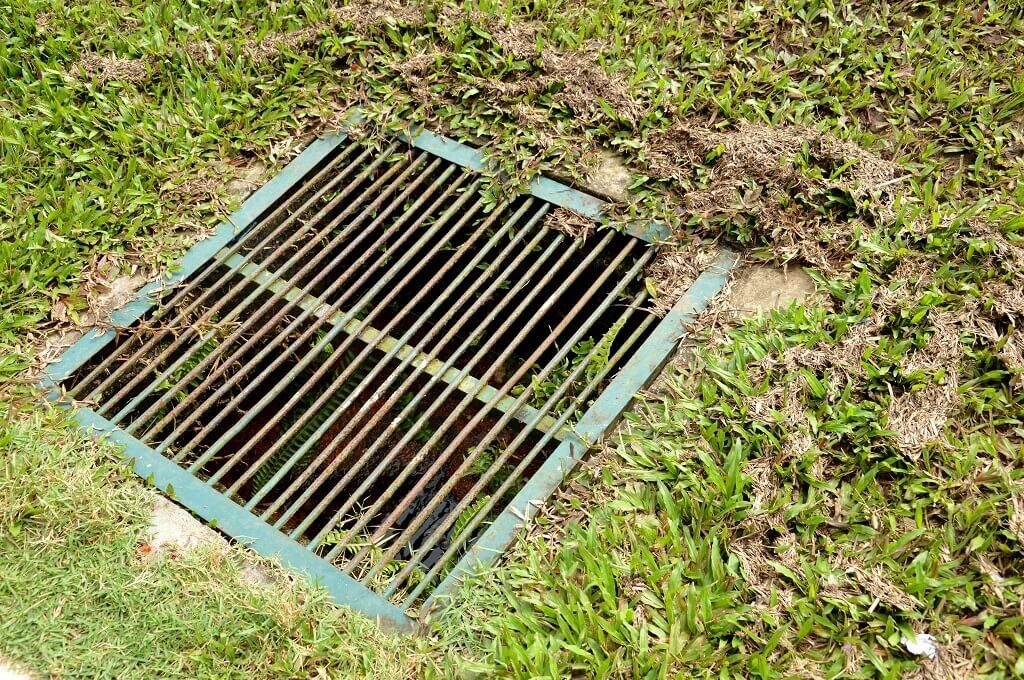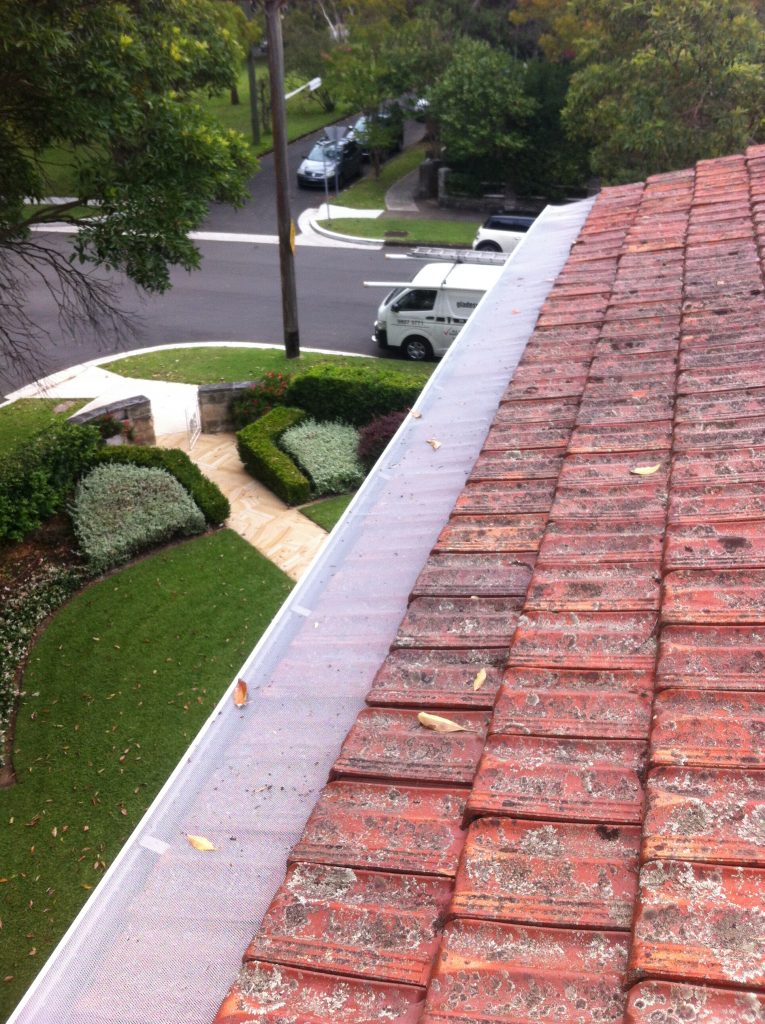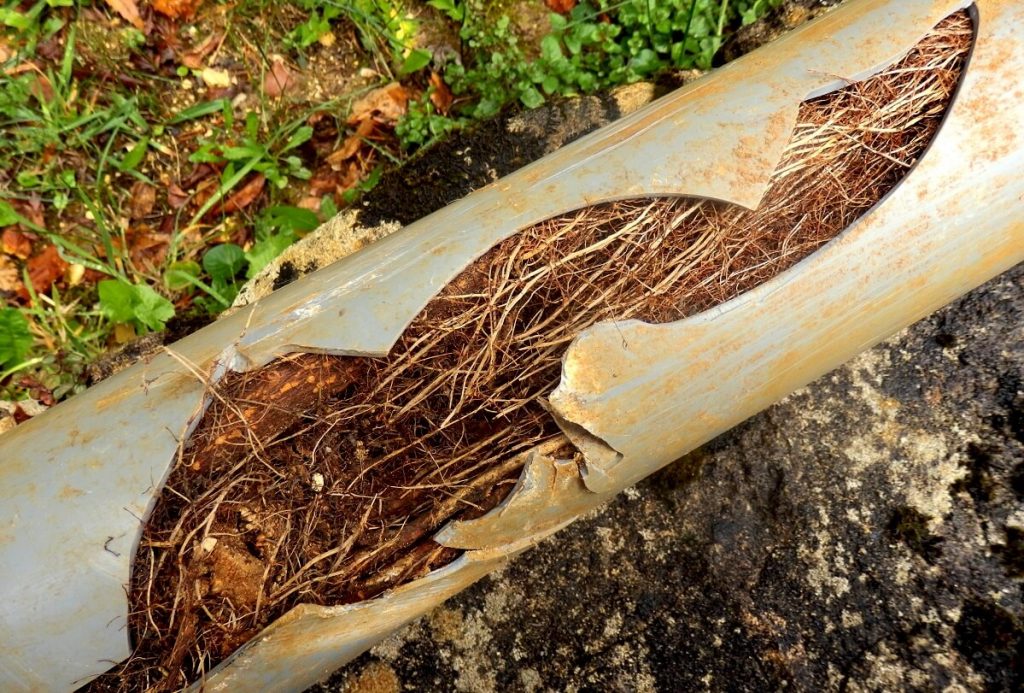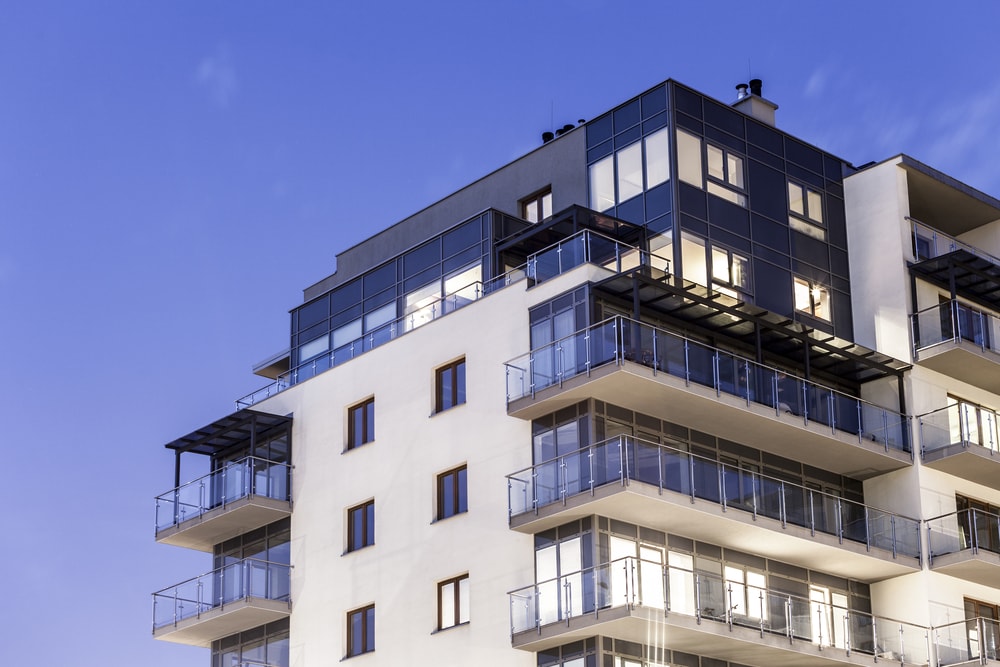Updated 30/07/2025
As a homeowner, there’s almost nothing that strikes fear in the heart like blocked drains. Whether you’re dealing with a clogged toilet or kitchen sink, or a blocked stormwater drain has left you with the wrong kind of backyard pool, Sydney drainage problems are an unpleasant inconvenience. Hoping your blocked drain might fix itself? Playing the wait-and-see game with your plumbing can quickly become a very messy nightmare!
So, if you suspect all is not well with your Sydney drainage, it’s time to take action. Here’s what you need to know about common drainage problems inside and outside of your Sydney home.
Common Drainage Problems in Sydney Homes
The most common plumbing call-outs we get are to deal with a blocked drain or toilet. Our customers will usually report symptoms including:
- Slow-draining sinks, showers and baths
- Toilets not flushing properly
- Wastewater overflowing from toilets, sinks, showers and baths
PLEASE NOTE: Overflowing wastewater is a health hazard and can cause significant property damage. Call an emergency plumber in Sydney to address the issue promptly.
What causes a blocked drain?
After decades of dealing with clogged drains in Sydney homes, we know that there are many weird and wonderful ways plumbing pipes can become blocked. However, it’s generally caused by things being put down the drain that really don’t belong there. The drainage pipe connecting a Sydney home to the main sewer is usually between 100-150mm in diameter. That means it’s equipped to deal with wastewater, human waste and toilet paper that breaks down easily – everything else belongs in the bin!
The most common culprits for blocked toilets include:
- Non-flushable items – including wet wipes, paper towels, hair, cotton buds, sanitary products – and for families with little kids, rogue toys dropped in the loo can cause all kinds of problems
- Using excess toilet paper
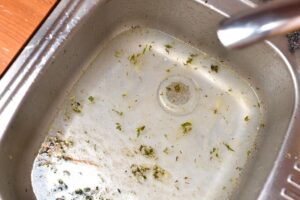 The most common culprits for blocked kitchen and bathroom drains include:
The most common culprits for blocked kitchen and bathroom drains include:
- A build-up of cooking oils, grease, fats, coffee grinds and food scraps
- A build-up of soap scum, body oils, shampoo, conditioner, body wash and hair
Sometimes humans are not the cause of blocked toilets and drains. In these instances, the most common causes are:
- Tree root ingress
- Ageing plumbing
How to unblock a drain or toilet
The best way to deal with a blocked drain is to call your Sydney plumber for an accurate diagnosis and long-term solution. However, if you suspect the clog is minor, there are some things you can try first.
Identify the location of the blockage
Is the blockage isolated to one drain in your home, or have you noticed that all drains are slow to empty? If it’s just one fixture (e.g. kitchen sink) giving you a problem, the blockage will be on that fixture’s waste pipe. If all the drains are affected, the blockage is on the main line of the sewer.
Isolated blockages may respond to DIY drain unclogging methods. Read on for some things to try.
However, blockages on the main sewer line cannot be resolved with DIY. Call a licensed plumber to thoroughly inspect and diagnose the drainage problem.
Try bicarb and vinegar
Try on: sink, shower and bath drains
A build-up of fats in kitchen and shower drains may respond to this DIY method.
- Pour a kettle full of very hot (but not boiling) water down the drain.
- Next, pour half a cup of bi carb soda down the drain.
- Follow this with a cup of white vinegar.
- Now you need to cover the drain to contain the fizzing within the pipe. For baths and sinks, insert the plug. Use an old rag to cover a shower drain.
- Let this mixture sit for half an hour. The chemical reaction will hopefully help to break up the blockage.
- Finally, flush using hot water from the sink mixer.
Plunge the blockage
Try on: toilets, sink, shower and bath drains
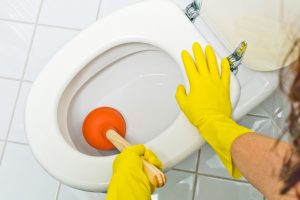 Every homeowner in Sydney should own a plunger. This handy tool may help unblock small clogs that are close to the drain opening. Ensure the mouth of the rubber end of the plunger covers the drain hole. You want to create a seal. For about 5 seconds, use a forceful up-and-down motion over the drain. Short and sharp bursts are best. The idea is to create pressure that dislodges whatever is blocking the drain.
Every homeowner in Sydney should own a plunger. This handy tool may help unblock small clogs that are close to the drain opening. Ensure the mouth of the rubber end of the plunger covers the drain hole. You want to create a seal. For about 5 seconds, use a forceful up-and-down motion over the drain. Short and sharp bursts are best. The idea is to create pressure that dislodges whatever is blocking the drain.
Commercial Drain Cleaners
Try on: sink, shower and bath drains
Commercial drain cleaners are usually the last resort when trying to unblock a drain, as they are either extremely caustic or corrosive. This makes them terrible for the environment and dangerous to human health, potentially causing eye damage, skin burns, respiratory problems, and poisoning. And most of the time, they’re a short-term solution.
If DIY methods don’t resolve your blocked drains, or they require more time and effort than you can spare, get in touch with Gladesville Plumbing. We’ll get your drains flowing again.
How plumbers unblock drains
Professional plumbers utilise a range of trade tools to deal with even the most stubborn blocked drains.
Depending on the type, location and severity of your blocked drain, the Gladesville Plumbing team may use a range of equipment, including:
- CCTV drain cameras
- motorised drain augers
- high-pressure water jetters
- root cutters
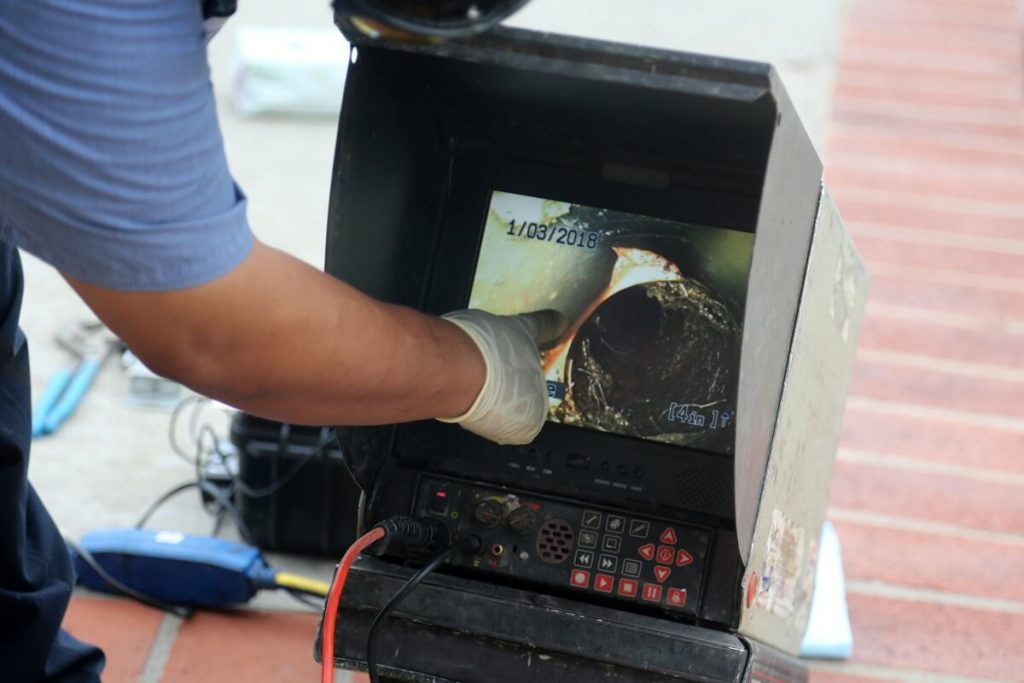
How to prevent blocked drains inside the home
Preventing a blocked drain isn’t always possible, but there are things you can do to reduce the likelihood.
- Only flush the three Ps down the toilet – poo, pee and (toilet) paper
- Don’t pour fats (like cooking oil) down the drain as it can harden when it cools in the pipes, creating a ‘fatberg’
- Don’t flush disposable wipes – they can wreak havoc on plumbing systems
- Use drain catchers in the shower and sink to prevent solid matter like hair, soaps, food particles and coffee granules from going down the drain.
Common Outdoor Drainage Problems in Sydney Homes
The most common outdoor drainage problem we get called out for is when there’s a blockage in the stormwater system.
Outdoor drainage is crucial for Sydney homeowners and is the best defence against our infamous storm seasons. A well-designed stormwater drainage system ensures that during a heavy rain event, roof water and surface water are directed away from your property via underground pipes. Private stormwater plumbing must be connected to a legal point of discharge, which is determined by your local council.
Obstructed stormwater drainage can lead to all kinds of problems. So it’s important to know what the warning signs are.
Signs a stormwater drain is blocked
You’ll typically notice signs of a blocked stormwater drain after a rain event. These signs include:
- water that’s slow to drain or that pools around the backyard
- stormwater overflowing or pooling around a grated pit
- overflowing downpipes and roof gutters
- gurgling sounds coming from the drains
- foul odours coming from drains or gutters
Noticed any of the above? Get in touch with a licensed plumber to resolve the issue before a small problem becomes a much bigger and more expensive one.
What causes blocked stormwater drains?
Organic matter and other debris
Blocked stormwater drains are commonly due to an accumulation of leaves, dirt, gravel, sticks and even garden covering materials like bark and mulch. Water will pick up whatever is in its path and carry it down the grates and pipes. Over time, garden debris and sediment build-up can form a blockage, either within the pipe or on the surface of a drain grate or cover.
Rubbish and other inorganic waste
Like your indoor drains, there are some things that should never go down a stormwater drain. Heavy rain can wash solid rubbish like plastic bags and bottles into drains, leading to blockages.
Tree roots
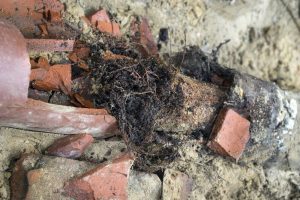 Tree roots are excellent at seeking out moisture, making underground stormwater drainage pipes an appealing target. If a pipe has even a small crack, tree roots can find their way in, growing and spreading until they cause a significant blockage or even break the pipe. Don’t have trees on your property? A tree’s roots can extend up to 12 times the radius of its canopy, so your pipes could be infiltrated by the roots of a tree located on neighbouring land.
Tree roots are excellent at seeking out moisture, making underground stormwater drainage pipes an appealing target. If a pipe has even a small crack, tree roots can find their way in, growing and spreading until they cause a significant blockage or even break the pipe. Don’t have trees on your property? A tree’s roots can extend up to 12 times the radius of its canopy, so your pipes could be infiltrated by the roots of a tree located on neighbouring land.
Old or damaged pipes
The older your Sydney plumbing is, the more susceptible your pipes become to breakage. Soil movement can also damage pipes. This is an issue for Sydney properties built on reactive clay soils that expand and contract.
What problems can a blocked stormwater drain cause?
If backyard drainage isn’t working as it should, excess water can accumulate on your property. A blocked stormwater drain can exacerbate this problem significantly. The consequences of ignoring a blocked stormwater drain may include:
- soil erosion
- waterlogged lawns
- pest infestations
- damage to property foundations
- rotting and warping of timber structures, e.g. pergolas, decks
- ground-level flooding
- roof leaks and/or inundation
Don’t wait for the worst to happen. Call your Sydney plumber for a fast and effective solution to your stormwater drainage problems.
How to unblock a stormwater drain
The fastest and most effective way to unblock a stormwater drain is by engaging a licensed Sydney plumber. However, there are things you can do first that may resolve minor clogs.
- Check drain grates/covers: sometimes grates are obstructed by a build-up of soil or sand, or clogged with leaves. You can attempt to remove these surface obstructions by hand or wash them away with a hose.
- Inspect gutters and downpipes: If you can see leaf litter and sediment build-up, it’s time to clean your gutters. Downpipes can be trickier to deal with. You may be able to reach into the top and the bottom of the pipe to remove leaves and soil and flush it out with your garden hose, but you’ll need a drain snake to reach blockages deeper inside the pipe. Drain snakes should only be used by trained professionals to avoid serious bodily injury or property damage.
How plumbers unblock stormwater drains
Professional plumbers utilise a range of trade tools to effectively clear blocked stormwater drains.
Depending on the type, location and severity of the stormwater drain blockage, the Gladesville Plumbing team may use a range of equipment, including:
- CCTV drain cameras
- motorised drain augers aka electric eel
- high-pressure water jetters
- root cutters
- pipe relining to prevent future tree root ingress
Need a plumber to unblock your stormwater drain? Just call Joe today!
How to prevent blocked stormwater drains
Blocked drains outside can often be avoided. Here are some tips to maintain the stormwater connections from your property.
Stormwater drainage maintenance should be carried out at least twice a year. For roof gutters and downpipes, you’ll need a ladder. This can be dangerous, so if in doubt, call in professionals to handle the job.
 Clear roof gutters of leaves and branches.
Clear roof gutters of leaves and branches.- Use a hose to clear out downpipes. Always remove any fittings on the end of the hose before feeding it down the pipe so they don’t get stuck. Running water can be useful for clearing any minor obstructions.
- Inspect all stormwater pits and grates in the yard to ensure they’re clear of garden debris, soil and sediment.
Other things to do:
- Keep garden beds well-maintained.
- Ensure tree branches are trimmed regularly to reduce the amount of leaf litter.
- Avoid planting trees or large shrubs near stormwater drains to prevent roots from infiltrating the pipes.
- Consider installing gutter guards and drain filters to prevent leaves, debris, silt and other contaminants from entering the stormwater drainage system.
What about blocked sewer drains?
Signs of a blocked sewer drain may be noticeable inside the home first, with slow-draining fixtures or water backing up in the shower or bath drain when you flush the toilet. It’s important to get this checked out by a plumber ASAP. The longer you wait, the greater the risk of an emergency overflow situation. Yes, it’s as bad as it sounds!
However, signs of a blocked sewer drain outside may include:
- An unpleasant sewage smell from the overflow relief gully (ORG)
- Raw sewage spilling out from the ORG
Overflowing sewage is an emergency problem that requires the urgent attention of a licensed plumber.
Blocked sewer drains may be caused by:
- tree roots
- foreign objects flushed down the toilet
- excess stormwater overwhelming the sewerage system
- old, damaged or incorrectly installed pipes
- a blockage located in the local council’s main sewer line.
A licensed plumber will be able to determine if the blockage is in your private sewer line or a problem with the public system.
Sewer drains vs stormwater drains
Sewerage drainage and stormwater drainage are two separate systems, and it’s important that your plumbing doesn’t direct stormwater into the sewer drain and vice versa. Stormwater drains release water collected from roofs and paved areas directly into local waterways. Sewer drains direct water from toilets, kitchens, bathrooms and laundries to treatment plants before it’s released into waterways.
If you suspect the sewer pipes on your property are incorrectly connected to the stormwater system, it’s mandatory for this to be reconnected to the sewerage line. It’s a matter of safety and well-being for you and the wider community.
Maintaining the overflow relief gully (ORG)
The ORG is a very important part of your plumbing infrastructure and is designed to prevent sewage from overflowing inside your house. It looks like a grated drain and is located outside, usually near your laundry or bathroom. If the sewer system becomes blocked or overwhelmed with stormwater, the cover of the ORG is designed to pop off and release sewage away from your home.
Regular maintenance can help ensure the ORG is functioning properly.
- Inspect the ORG quarterly to check on the water levels. If it’s a high water level, you may have a partial blockage on your sewer line.
- Check that the grate cover isn’t obstructed by garden debris or restricted by silt. Regularly clean the grate to ensure it can be removed easily. Remember that if it can’t pop off when the sewerage system is blocked, sewage that is supposed to flow outside your property could end up overflowing INSIDE instead.
- Never glue down the ORG grate or cover it with a pot plant.
Having trouble locating the ORG on your property? Contact an experienced plumber to ensure your property is protected from the very unpleasant mess of sewage overflow!
Who pays to unblock drains?
Homeowners often ask whose responsibility it is to pay for a blocked drain. The answer typically lies in where the blockage occurs and whether individual actions contributed to the problem.
Blockages in stormwater and sewer drains can occur within the council’s drainage system or the private wastewater pipes located on a property.
Homeowners are responsible for the maintenance and repair of all private stormwater and sewer drainage infrastructure within the property boundaries. That means any blockage that is located within your home’s drainage pipes must be fixed at your expense.
When is the council responsible?
If the problem is only impacting your property, the blockage may be within your plumbing infrastructure. If your neighbours are also affected, this could be due to a blockage in the council’s infrastructure. You’ll need to check with Sydney Water or your local council to clarify your particular situation.
Does insurance cover blocked drains?
You’ll need to check the terms and conditions of your policy for a definitive answer, but typically, unblocking a drain is not covered by home insurance. However, if a blocked drain has caused damage to your home, your insurance may cover the subsequent repairs. e.g. damaged floorboards. Speak with your insurer for clarification about what your policy covers.
It’s important to note that insurance usually only covers accidental blockages (like tree roots). If a blocked drain has been caused by the occupants of your household, this may impact your insurance coverage. An assessor may find you liable for any damage and deny your claim if the blockage is due to:
- negligence: your plumbing has not been well-maintained
- misuse: you’ve been flushing rubbish in the toilet or pouring car oil down the drain
- illegal plumbing: dodgy DIY plumbing is a one-way ticket to insurance claim denial
If your home is damaged as a result of a blocked drain on your neighbour’s property, this can complicate liability, too. Your insurance company may decide that your neighbour (or their insurance company) is responsible for the cost of your repairs.
You can’t control public drainage infrastructure or plumbing on neighbouring properties, but you can and SHOULD look after your own plumbing. It’s the best way to prevent the nightmare of a blocked drain – and the hassle of chasing insurance claims!
If your drainage system is struggling, don’t put off dealing with it. Contact Gladesville Plumbing for a thorough assessment and cost-effective long-term solutions.
Preparing outdoor drainage for storm season
Free-flowing drains are necessary for your plumbing to work efficiently, and this is never more important than during a Sydney storm!
Here are some steps you can take to ensure your stormwater drainage is up to the job.
- Ensure your stormwater maintenance is up to date
- Arrange gutter proofing for added protection
- Consider installing a stormwater pump system
Which drains can be affected by a storm?
The only drains that should be affected during a storm are the stormwater drains. If the internal plumbing of the home is affected by a storm, this requires investigation. If you do notice a backup during a storm where the toilet won’t flush or the shower tray fills up with water, call your Sydney plumber.
Is your stormwater drainage system well designed?
The effectiveness of the stormwater system on your property depends on a range of things, including:
- the landscaping design
- adequate roof guttering and downpipes
- functional stormwater drains, pits and grates
If you’re unsure about whether your backyard drainage has been optimally designed, book a drainage system inspection for a professional assessment.
Sometimes, small adjustments and installations can make a huge difference to how water flows on your property. Investing in this before storm season hits may save you a whole lot of stress and expensive repairs.
Don’t risk a disaster this storm season!
Talk to Gladesville Plumbing about how to ensure your stormwater drainage is fully functional and ready for the next Sydney weather event.
Contact the Sydney drainage specialists
Gladesville Plumbing have been helping Sydney homeowners with their backyard drainage systems for more than two decades. Our skilled team of experienced plumbers are equipped with cutting-edge equipment to effectively clear blocked drains, remove invasive tree roots, and protect your pipes from future problems.
We can assist with:
- Blocked Sinks
- Blocked Shower Drains
- Blocked Toilets
- CCTV Drain Inspections
- Blocked Stormwater Drains
- Blocked Sewer Drains
- Blocked Gutters
- Blocked Tanks and Irrigation
- Blockage Prevention
- Backyard Drainage Design
- Emergency Plumbing
Get a FREE quote now from our experienced North Sydney Plumbers.
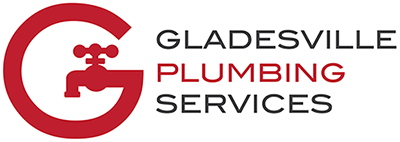

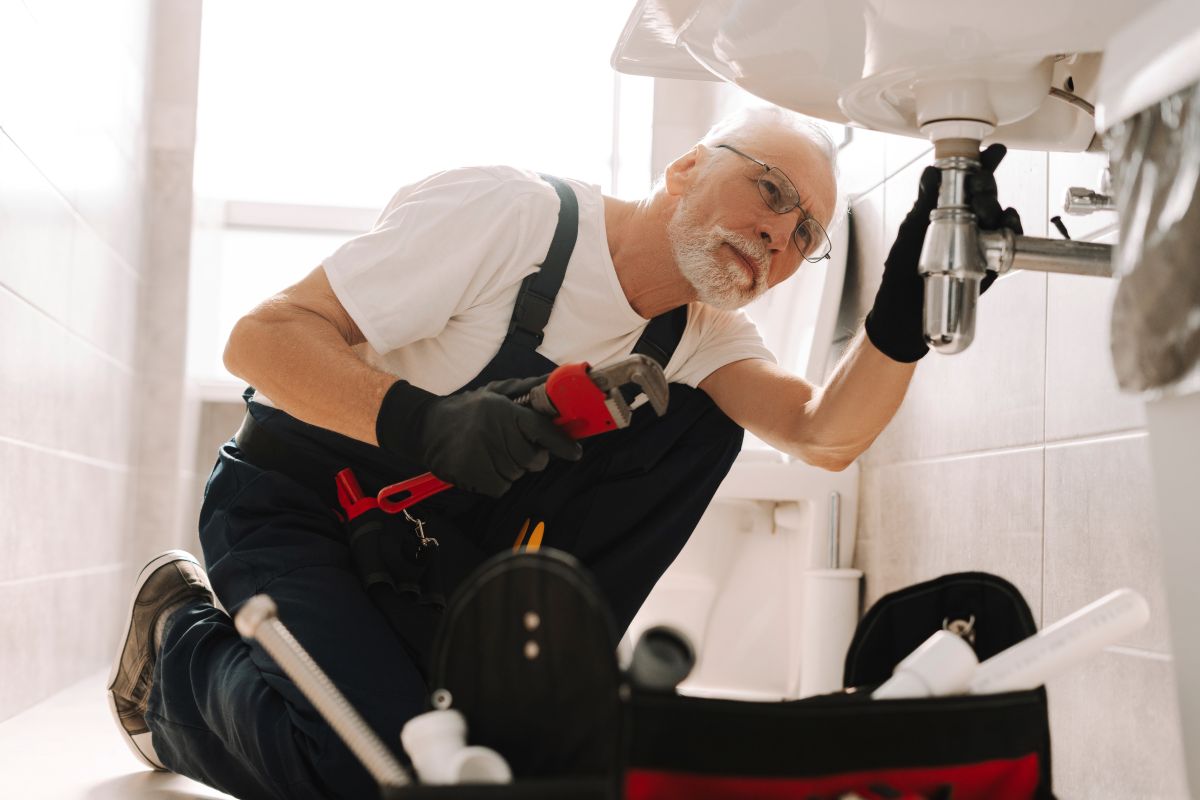
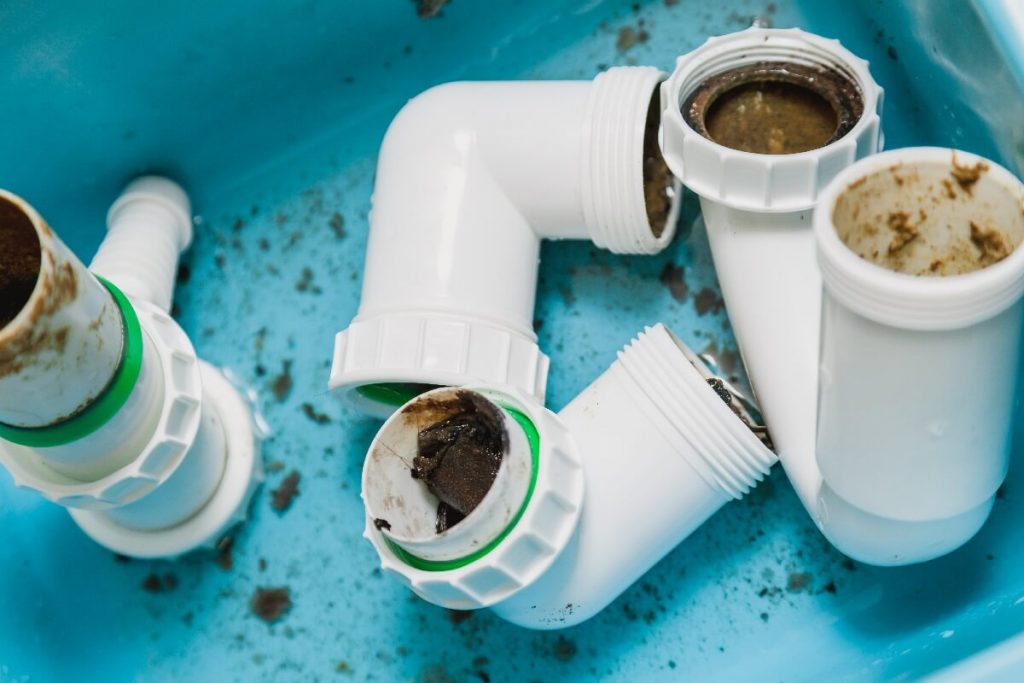
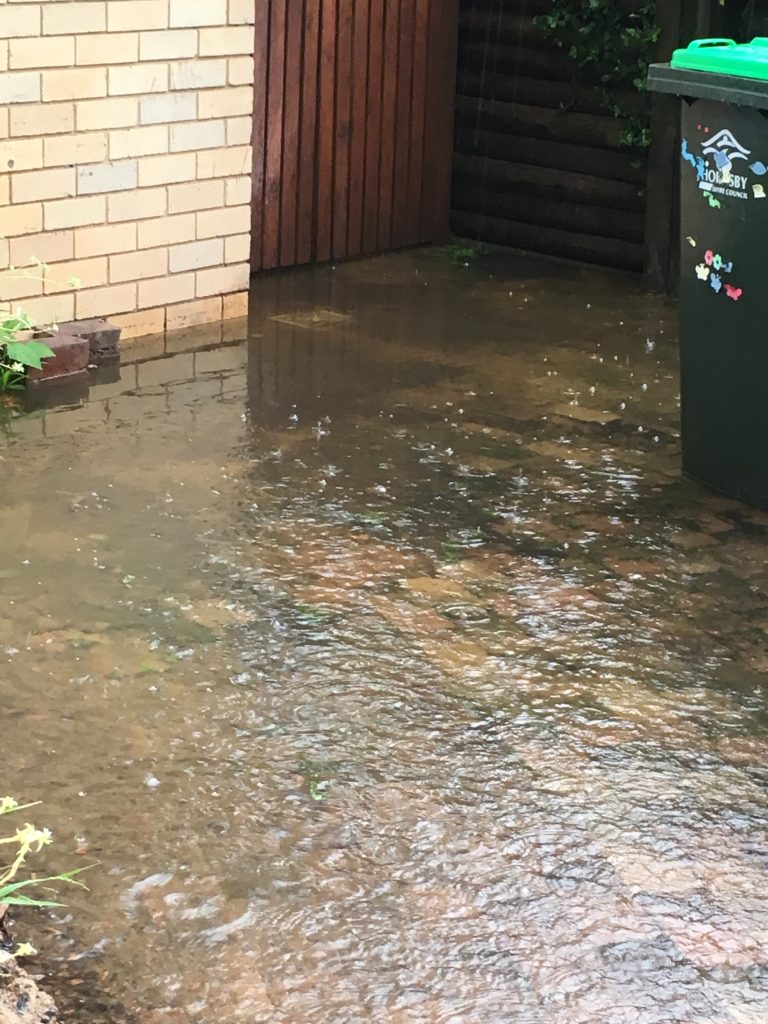
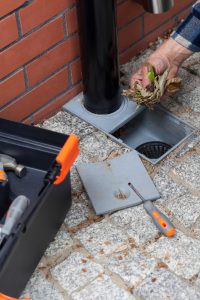 Clear roof gutters of leaves and branches.
Clear roof gutters of leaves and branches.